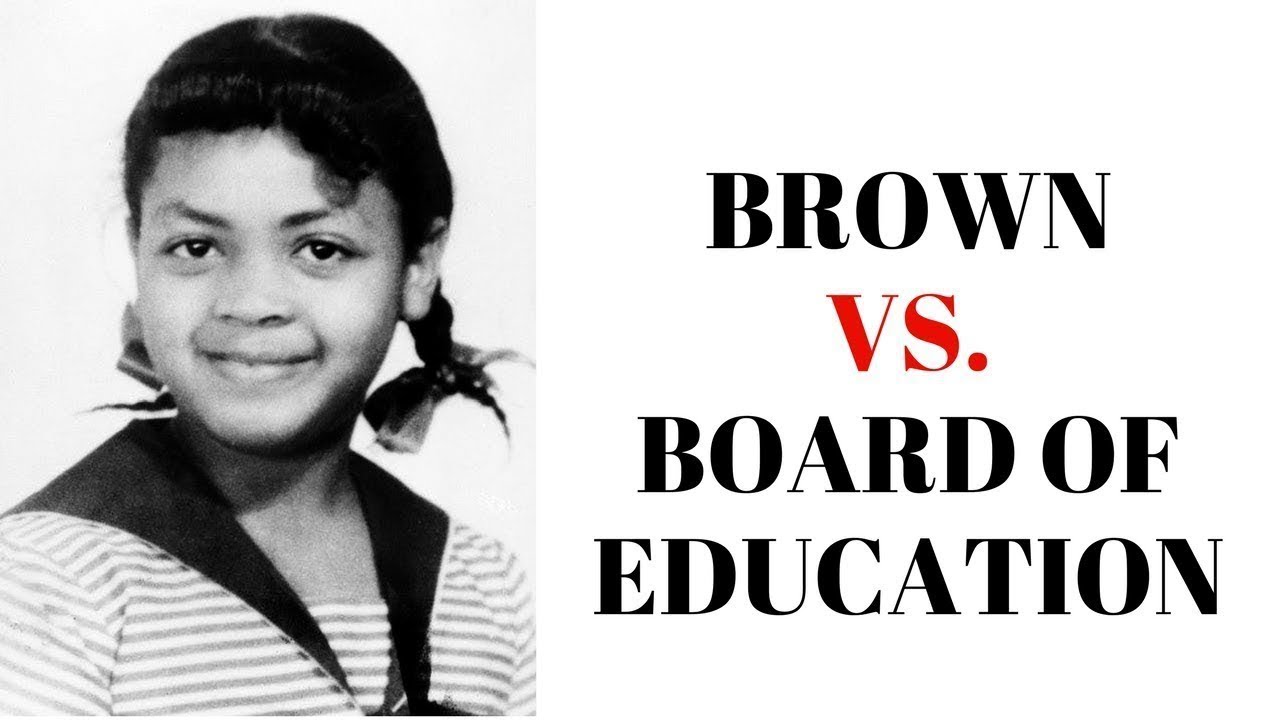The Brown family and twelve other families in Topeka, Kansas, filed a lawsuit when the district refused to let the daughter of black church minister Oliver Brown attend Sumner Elementary School, only a few streets from their house. The Brown vs Board of Education summary is provided below.
The Case
The Supreme Court decision Brown vs. Board of Education overturned the legal precedent established by Plessy, making it illegal for schools to be segregated based on race. It found that “separate educational facilities are inherently unequal” and that laws that sanction such segregation deny African Americans equal protection of the law, a constitutional requirement.
The Brown case itself was a combination of five separate legal appeals: the original Brown case, Briggs v Elliott (filed in South Carolina), Davis v County School Board of Prince Edward County (filed in Virginia), and Gebhart v Belton (filed in Delaware). Thurgood Marshall recruited the nation’s best civil rights attorneys to represent the plaintiffs, including Robert Carter, Jack Greenberg, Harold P. Boulware, Constance Baker Motley, and Spottswood Robinson.
All of the cases reached the Supreme Court around the same time, so the justices heard them together. The Court ruled on them all simultaneously, and their combined decision became known as Brown vs Board of Education.
Despite the widely held prediction that the Supreme Court would be divided on the issue, Justice Earl Warren wrote the majority opinion in Brown. It was one of the first times the Supreme Court ruled by unanimous consent, and Warren himself later said that there was an intangible feeling of joy when the words “unanimously hold” were read.
The Decision
Following the victories in Sweatt and McLaurin, NAACP chief counsel Thurgood Marshall called a conference of his attorneys to determine the next step in the legal campaign against segregation. Marshall decided that it was time to shift from a narrow focus on the inequality of separate black schools to a complete assault on school segregation. He launched a coordinated group of five lawsuits against Kansas, South Carolina, Virginia, Delaware, and the District of Columbia school districts. These lawsuits were combined into one unified case, Brown vs Board of Education.
Robert Carter and Jack Greenberg were assigned to argue the case before a three-judge panel in district court in Topeka. Local NAACP attorneys Charles Bledsoe and brothers John and Charles Scott assisted them. The judges on the panel ruled against the plaintiffs, but the decision was appealed to the Supreme Court.
The Supreme Court’s unanimous decision in May 1954 struck down school segregation. The decision was a blow to the “separate but equal” doctrine that had been upheld in Plessy and the basis for state-enforced racial discrimination at all levels of government since the nineteenth century. It was also the beginning of a massive push to desegregate housing, public accommodations, and institutions of higher learning. In many places, white supremacist groups and politicians met the victory with resistance, as in Arkansas, where Governor Orval Faubus sent in the National Guard to keep school integration from happening.
The Reaction
The Brown case sought to end the “separate but equal” doctrine created in Plessy and make it illegal to continue segregation in public schools. The lead lawyers for the plaintiffs were Harold P. Boulware, Thurgood Marshall, and Spottswood W. Robinson III. Their photo is shown here in preparation for the case being argued on December 9, 1952.
The Supreme Court’s unanimous decision in 1954 ruled that segregated schools violated the equal protection clause of the Fourteenth Amendment. In the aftermath of Brown, many African American citizens launched a civil rights movement that eventually led to the Civil Rights legislation of the 1960s and ended legal segregation in the South. The traditional narrative is that Brown inspired the movement by overturning Plessy and declaring that the Supreme Court was on the side of desegregation.
Even though segregation was no longer a constitutional issue, it was still deeply rooted in Southern culture and politics. In response to Brown, Virginia politicians such as Senator Harry Byrd forged the “Southern Manifesto,” an agreement to fight the implementation of the decision. The Manifesto included laws that punished schools that integrated by cutting off state funds.
During the Court’s reargument of the case, Justice Felix Frankfurter attempted to convince some of the justices who had intended to dissent from the original decision to join a unanimous opinion that would outlaw segregation. He argued that equality and segregation were inconsistent with the framers’ understanding of the original meaning of the Fourteenth Amendment and that the Court had a moral obligation to eliminate segregation.
The Consequences
The Supreme Court’s unanimous decision in Brown inspired many African Americans and was a major catalyst for the Civil Rights Movement. It permanently discredited the legal rationale of segregation and paved the way for further progress in desegregating housing, public accommodations, and higher education institutions.
But not all Americans were pleased with the outcome of the case. Some constitutional scholars believed the Court went too far in overturning Plessey and overstepping its authority. Die-hard segregationists were especially disapproving.
One reason that many Americans opposed the Court’s decision was the fact that it did not spell out a clear plan for school desegregation. Rather than a clear timetable for implementing Brown, the Supreme Court urged state officials to “desegregate schools’ with all deliberate speed.'” The Supreme Court re-argued the case in Brown II, but this was a mere delaying tactic that helped segregationists avoid complying with the original decision.
The Court re-argued the case because Justice Felix Frankfurter wanted to get all nine justices on board with an opinion that outlawed school segregation. During the reargument, the justices who had intended to dissent spent considerable effort persuading those who had originally planned to join them in supporting the majority. Ultimately, all nine justices agreed that segregation was unconstitutional and violated the Constitution’s equal protection clause.




